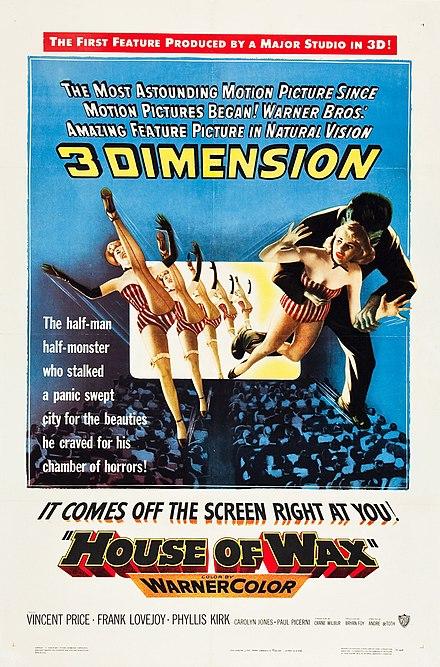I admit to using Wikipedia and I even support it. It’s the starting point for looking up things for which we’re not familiar. Since most movies I watch don’t lead to discussion (ironically, I know very few people in person who watch horror), I often go to Wikipedia to find “conversation partners” about films. One thing I’ve noticed is that a great number of articles on cinema have a section “Later Reception.” In my experience, this usually appears on pages about movies initially panned but which have later been reassessed as being better than originally supposed. In the case of House of Wax, the film was even selected for preservation in the National Film Registry because of its significance. It’s interesting to read the sometimes boorish comments of the first critics. Of course, the story had been around for some time then, so they were perhaps too familiar with the premise.

I can’t speak for the Library of Congress’ National Film Registry, but the notable features include its status as the first 3D movie with stereophonic sound, and the first color 3D movie released by a major studio. For me, however, this was the film that launched Vincent Price to stardom. He would go on to become the horror icon of American movies for the next two decades and many of the films would be, to use the National Film Registry’s language, “significant.” The title already hints at the plot. What horror film with such a title wouldn’t involve embalming a living person in wax? Rather like Chekhov’s gun, if you title a picture like this, you need to make sure the gun, as it were, goes off.
The 3D gimmicks (I saw it only in 2D) are pretty obvious, but there are many interesting sub themes running throughout the movie. Even in the button-down fifties there were directors who knew how to titillate. In any case, the 3D aspect adds another detail to the story. The director, Andre de Toth, was blind in one eye, which meant he couldn’t see the 3D effects. This too makes the film worthy of note, and, again, significant. Price plays his role of the urbane villain quite well, although this villain has cause to be wroth. An artist forced to watch his work destroyed is likely to become unhinged. As a horror film it also works well since wax museums are inherently creepy places. I may have seen this movie in my younger years, but if so it didn’t stick with me. I would have to agree with Wikipedia’s later reception, however. This is an effective movie, even for a septuagenarian.
